Step by step guide for growing tomatoes from seeds
Today, we learn about growing tomatoes from seeds. This topic also covers tomato planting care and harvesting techniques.
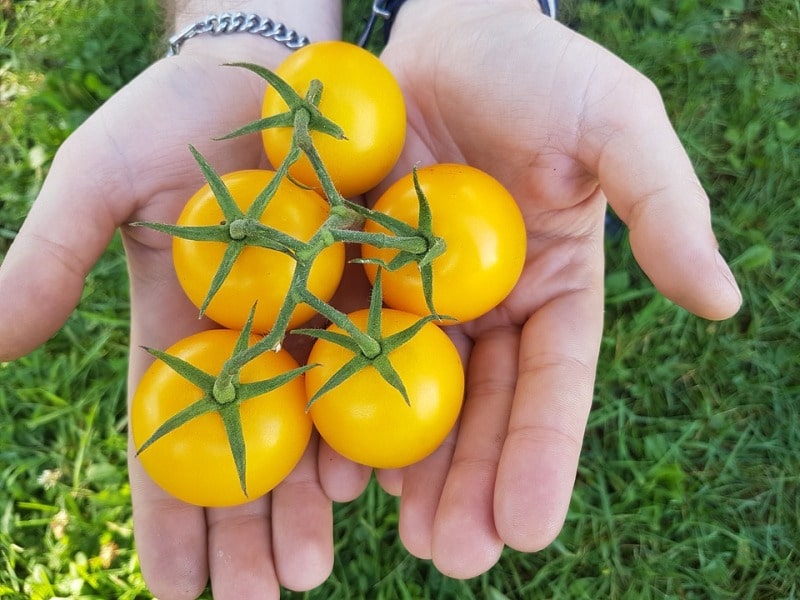
If you are interested in growing a tomato plant from the ground up, i.e., if you want to grow tomatoes from seeds by making use of ripe and healthy tomatoes you have in your home already, you can grow so many tomato plants which are unique in your home garden. There are few instructions to be followed for growing tomato plants from seeds. For the seeds, you can buy them from the stores. They will be available pre-packaged. Else, you will need to ferment them on your own. In this article, we will learn how to grow tomato plants from seeds, how to plant tomato at home, how to grow tomatoes in pots, how to grow tomatoes, how to plant tomato seeds outdoors. Along with this, we will also come to know tomato growing tips and tomato growing secrets.
Preparation of your seeds:
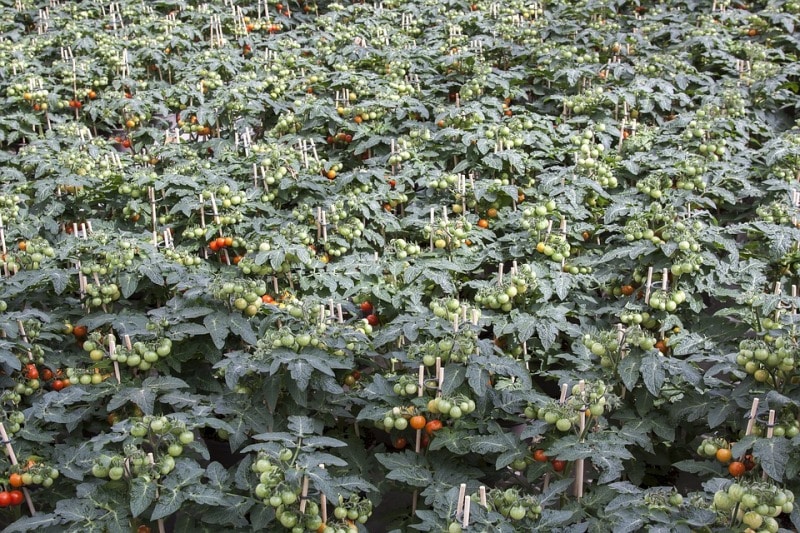
Read: How to Grow Swiss Chard in Home Garden.
- For growing tomatoes, you can purchase the seeds online at any of the sites which involve the exchange of seeds. There is also a chance to purchase them from the department store where they will be available in the garden section. If you want to go ahead and take the seeds from a tomato plant, then you should be taking one tomato from that plant. In this case, ensure that the tomato is taken from a plant which is grown from a pollinated seed which is open or an heirloom. If you are selecting tomatoes from a plant which is treated with chemicals or a hybrid one, the results you see will not be much attractive. A tomato plant can be classified as follows:
- Hybrid: Hybrid tomatoes are the ones which have been reproduced in a genetical way for many generations without any sort of cross-breeding. Most importantly, they are tomatoes which are pure-bred. The hybrid tomatoes ate the ones which are a cross between two different varieties.
- Determinate or Indeterminate: This type of classification of tomatoes will explain the time length for which a tomato plant will give rise to fruit. The tomato plants which are determinate are the ones which will produce for few weeks whereas the indeterminate tomato plants are the ones which will produce the fruits in the complete season of growing until the environmental conditions become too cold. Indeterminate tomato plants are the ones which will grow larger and will also need more attention and care at the time of staking and pruning.
- Shape: Tomatoes are again classified based on the shape into four categories:
- Globe
- Paste
- Beefsteak
- cherry
Globe is the one which is very popular, paste ate the ones which are used for the preparation of sauces, beef steak is considered to be the largest and the cherry tomatoes are the ones which are of small size and are mostly used in the preparation of salads.
Starting the seeds:
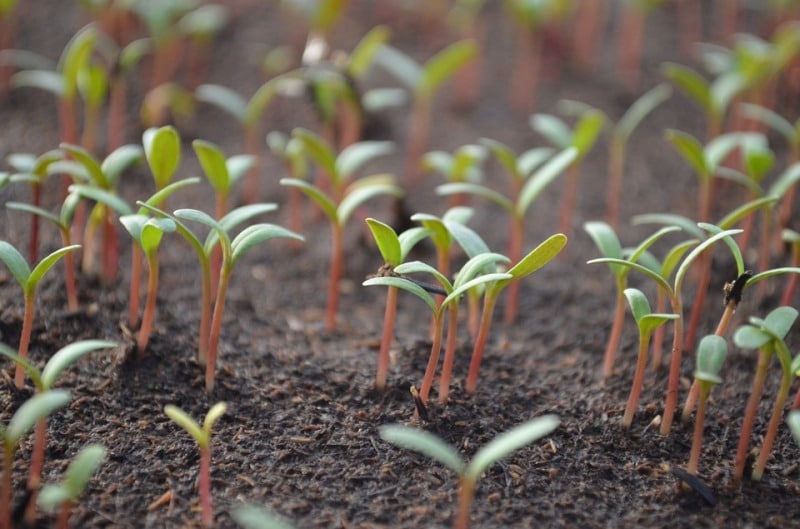
Read: Growing Bok Choy, Planting, Care, and Harvesting.
- First and Foremost, growing tomatoes from seeds is an easy and effortless task.
- To start the preparation of seeds, you will be needing a container with a lid which is fitted in a loose manner as the pulp and seeds of the tomato will be left in the container for several days. Development of a layer of mold will take place on the seeds. This particular process may destroy many diseases which are seed-borne and will also affect the plants coming in the next generation.
- If you are going with the fermentation of many different varieties of seeds, make sure that you are labelling the container with the exact variety for the avoidance of any mix-ups. The lid has to be set at the top of the container but makes sure that you are not sealing it as there should be free circulation of oxygen for reaching the pulp.
- The process of fermentation may seem to be off-putting and its smell will also be unpleasant. So for this, the container has to be kept somewhere else. For instance, you can keep the container under a wash basin or in your garage. But make sure that your garage is sufficiently warm.
- The container has to be stirred on a daily basis until you see the formation of a layer of white mold on the surface. It will generally take about 3 days for the formation of mold. Make sure that you are harvesting the tomato seeds as soon as the formation of mold takes place so that the seeds will not undergo the process of germination in the container.
- Now it’s time for the harvest of tomato seeds. The layer of mold has to be scooped off by wearing gloves to your hand. The seeds should be sunken at the container’s bottom.
- The seeds should be allowed to settle at the bottom of the container and continue pouring the unnecessary parts of the mixture over a strainer. Always be very careful not to throw any of the seeds. After all the seeds are collected in the strainer, they should be rinsed with water in a thorough manner.
- A flat dish made of ceramic, a plywood piece, a glass dish or a window screen are the ones which work well. It may be tough to take off the seeds which are dry from cloth or paper. When they are dry, you will need to package them in a plastic bag which is sealed until you are prepared for the plantation. Make sure that you are labelling the seed varieties of the sealed package.
- There is another option to place them in a container which is having an air-tight lid and place the container in a refrigerator for the simulation in winter climatic conditions. Make sure that you are not placing the seeds in the freezer. Placing them in a freezer will cause damage to them.
Plantation of seeds:
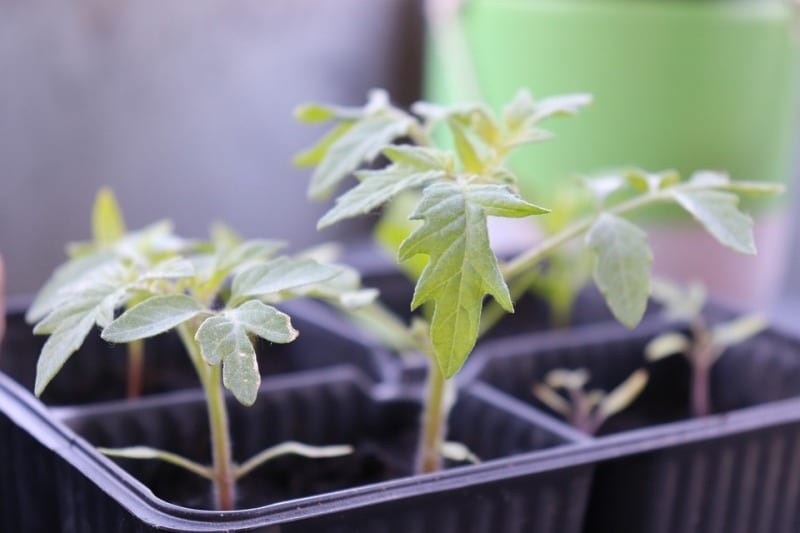
Read: How to Make Garden Seedbed.
- The tomato plants can be started from seeds in the indoor locations. For the preparation of your tomato plants to get transferred to the outdoor locations, you will need to start seedlings in the indoor locations when the climatic conditions are still cold outdoors. The temperatures which are cool at the start of the spring affect the growth of the young seedlings and sometimes they may also kill them. The seedlings have to be started at the indoor locations for the improvement of chances of production.
- The next thing you will need to do is purchasing the peat pots made of plastic or the same type of small pots for the growth of seedlings. These pots can be found at any of the nurseries present in your locality or any of the gardening centers.
- The peat pot has to be filled with the soil mix which is moistened. This soil mix is complete of your choice. For instance, one soil mix can be prepared by making use of ⅓ of peat moss, ⅓ rd of compost and ⅓ rd of coarse vermiculite. Always make sure that you are watering the soil mix before you start sowing the seeds.
- Start sowing 2 to 3 seeds at a depth of ¼ the inch in the soil present in each individual pot. The seeds have to be covered with soil and after that, pat them in a light manner.
- The containers have to be stored in a room which has a temperature in between 20 to 26°C till the process of germination takes them. When the seeds undergo the process of germination and get germinated, you will need to move them outdoors into full sun or you can also grow them indoors under grow lights.
- Mist the seeds on a daily basis for the first one week to 10 days. When you start seeing the sprouts, you can water them less number of times. More tomato plants will be killed if too much water is used. So make sure that you are watering carefully after you see the sprouts.
- The seeds can also be soaked flat in water so that the roots will be watered from the bottom. Misting may not give sufficient water to the roots of the plants.
- The pots have to be checked on a daily basis. Once you see the plants peeking out of the soil, they will grow in a quick manner.
Moving the tomato plants to outdoor locations:
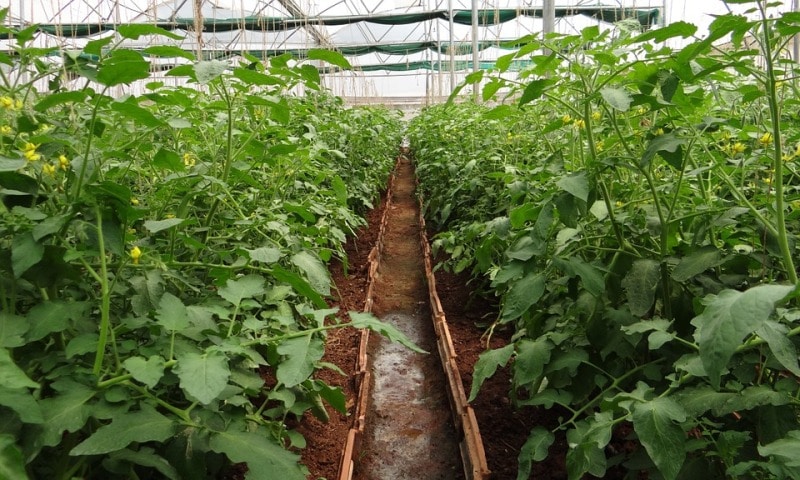
Read: Types of Greenhouses in India.
- Check if your tomato plants are grown to at least 5 inches of length. When you see that there is no harm with frost in the outdoor locations and you are also confident that your plant is meeting the required height parameters, you can be sure that they are ready for the transfer to outdoor locations.
- About seven days prior to planning the transfer of your tomato plants to outdoor locations, you will be required to slowly adjust them to the temperatures which will be present in the outdoor locations. You will need to start exposing the plants slowly to the sun, starting with partial shade and slowly, you will need to increase the number of hours the tomato plants will stay in the outdoor locations each day. You will need to start with an hour a day and slowly increase the on a daily basis.
- Now it’s time to start the preparation of space in your garden. You will have to use the soil which is well-drained with a very good amount of organic material in it.
- You can also consider mixing of peat moss into the soil for the improvement of drainage. You can also go ahead and mix the compost or leaf mold.
- For the usage of peat moss, take off half of the soil and combine the removed soil with an equal amount of peat moss. The peat moss has to be mixed back into the area of plantation.
- Tomatoes will grow to their best when the plantation takes place in the soil which has a pH between 6 and 7.
- After testing the pH of the soil, make the adjustments which are required. After making necessary amendments to the soil, the pH level has to be tested again.
- If you see that the level of pH is less than 6, then you will need to add dolomite lime to the soil to increase the level of pH.
- If you see that the level of pH is more than 7, you will need to add granular sulfur to decrease the level of pH.
- A hole has to be dug at a depth of 2 feet. The hole has to be sufficiently deep that you can start plantation of your seedlings and only the top ¼ the part of your tomato plant will be remaining out of the ground surface. A scoop of organic material like compost has to be placed at the bottom of the hole. This will give your tomato plant an additional boost and will also help you in keeping the plant from going into shock after transplantation.
- Take off the tomato plants from their pots in a careful manner and place them at the ground level. Make sure that you are not disturbing the roots of the plants at the time of the process of transplantation. The transplants have to be set sufficiently deep in such a way that the soil will touch the first bunch of new leaves when you are covering the tomato plant with soil. The area of plantation has to be patted in a light manner. Make sure that you are removing all the leaves which are at or below the level of soil surface. There are chances of your tomatoes catching diseases from their leaves which are in contact with the soil.
- Now its time to fertilize your tomato plants. You can start fertilizing them with chicken manure, fish meal or fertilizer which has low nitrogen or high phosphorus content. After this, you can go ahead and start watering the plants in a thorough manner. You will have to repeat the process of fertilization each and every month.
- You will need to keep trellises or stakes beside your plants. This will offer the tomato plants support so that they can latch onto them as they start growing and this will also make it easy for you to pick the fruits. Be very careful to make sure that you are not disturbing the roots of the plants.
Growing tomato plants:
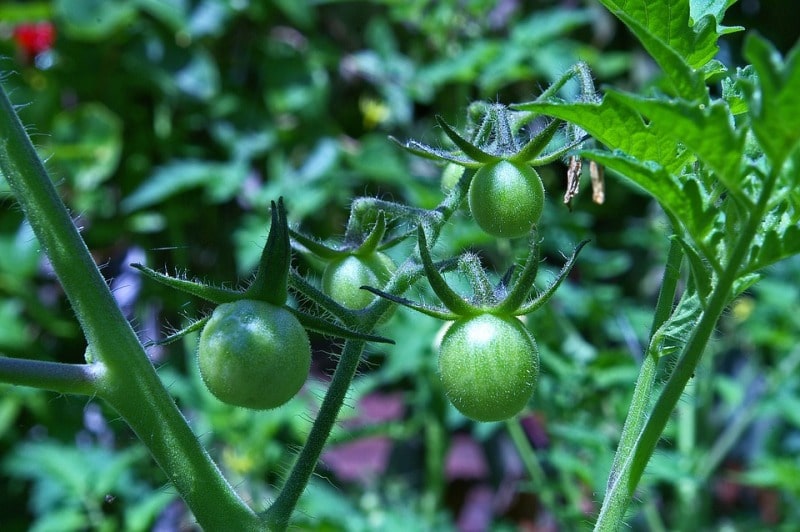
Read: Urban Apartment Gardening Ideas.
- Your tomato plants have to be fed and watered in a frequent manner. The base of the plant has to be watered for avoiding the development of mildew on the leaves of the plant. The plants have to be sprinkled with a seaweed which is in the liquid form and the compost has to be layered directly on the soil which is present around the tomato plant. This has to be done on a weekly basis for the rise in the production of fruits.
- If you are trying for the promotion of a better growth and fruit yield, you can pluck off the suckers of the tomato plant by making use of your fingers whenever they start appearing. The suckers will grow in the crotch in the middle of the main stalk and the side stem. You will need to leave a few suckers near the top of the plant for avoiding sunscald.
Harvesting of Tomatoes:
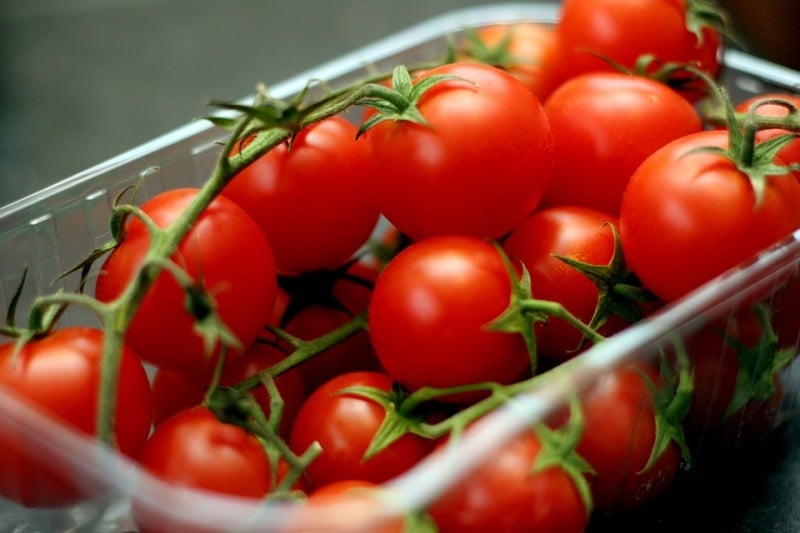
- The fruit has to be harvested at its peak. You should be seeing the fruit after two months of the plantation. The plants have to be monitored on a daily basis once they start to ripen to make sure that they have a peak flavor. The fruits have to be twisted in a gentle manner and make sure that you are not pulling the vine.
That’s all folks about growing tomatoes from seeds. Keep growing tomatoes!.
Read: Hydrogel Agriculture Technology.